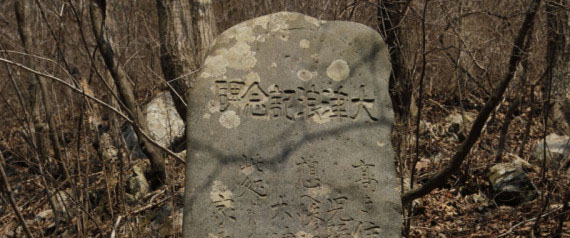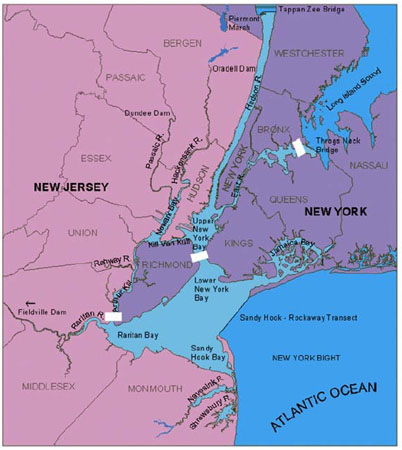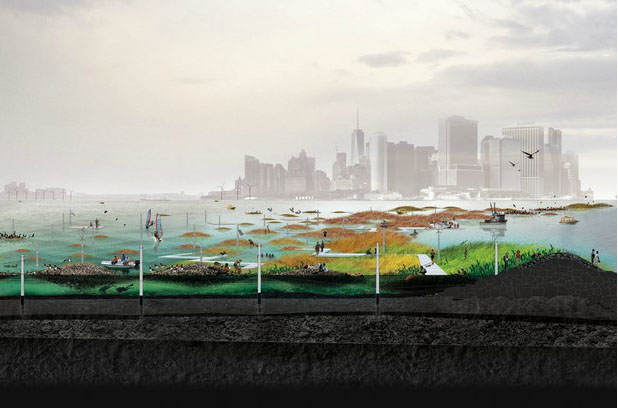Even before Sandy, the word ‘resilience’ was on its way to becoming a meme. Then, when a “natural disaster” struck the political and financial powers of New York City – along with countless others – the idea started to take on some urgency.
Ironically, urgency is not a typical approach to resilience. The idea of resilience, in short, is to have the ability to survive and bounce back from “bad things,” whether they be natural or man-made. The reason urgency often doesn’t apply is that, as many have observed, we humans are not well equipped to plan for future possibilities. Especially ones that seem less than imminent or less likely to affect you personally.
Sandy both proved the immediacy of a formerly more or less theoretical threat and showed that it can bring a major American city to its knees. (Katrina’s hit on New Orleans should have accomplished that, but it didn’t, perhaps because NOLA has long lived with the possibility of flooding or because Wall Street is not in New Orleans.) Enough so that resilience is now even a US Senate topic in the form of the STRONG (Strengthening the Resiliency of Our Nation on the Ground) Act introduced post-Sandy by senators from NY, NJ and Massachusetts.
Increasing resilience has long been a reaction to natural disasters such as earthquakes. Building codes are updated; procedures for the aftermath are put in place (though never adequate for a worse-than-the-previous event). They tend, though, to lose out to complacency. In some of the areas devastated by the tsunami that hit Japan, there were century-old stone markers placed after a previous tsunami warning people not to build closer to the shore. But when no tsunamis occurred for a while, the stones were ignored and forgotten. Resilience itself may not be resilient, at least not to the effects of time.

“High dwellings are the peace and harmony of our descendants,” the stone slab reads. “Remember the calamity of the great tsunamis. Do not build any homes below this point.” Source: Huffington Post
Sandy-type disasters are not likely to fade with time. Earthquakes, tsunamis, volcanos and the like generally don’t have patterns to their frequency or scale. And it used to be that climate disasters like drought or flooding didn’t either. But where the former are truly natural – “acts of God” – we can no longer say the same is true of the latter.
Don’t get me wrong. I’m not claiming that Sandy or the Midwest drought wouldn’t have occurred were it not for our environmental “sins.” (Hmm, there must be a religion somewhere that believes these events were indeed acts of God in response to those sins.) But without several anthropocenic multipliers, their effects would certainly have been less. And as there is no foreseeable diminishment of those influences (CO2 levels are not falling, marshes and mangroves are not being re-established, shore development is not abating), it’s apparent that, unlike truly natural disasters, the frequency and scale of climate-related disasters will only escalate.
Which brings us back to resilience and the question of how we deal with the prospect of future disasters. The EcoOptimist in me has somewhat mixed feelings about emphasizing resilience. My reservations derive from two related issues. The first is that the pursuit of resilience can be seen as the equivalent of throwing in the towel and conceding defeat to the inevitability of climate disruption. The second is that, in our binary either-or thought process, an emphasis on resilience is all too likely to occur at the expense of actions and investments that might diminish the causes of climate disruption (thus in fact leading to that same defeat). The costs of adapting cities will surely divert funds from programs to curtail CO2 emissions.
In a recent talk, I divided climate actions into three categories: prevention, mitigation and adaptation. Prevention is the primary path we’ve been pursuing. Though there’ve been some successes (for example, acid rain), there have been far more failures, mostly in the form of opportunities not taken. This is highly unfortunate because, aside from the obvious reasons, virtually every study has shown that prevention is the least costly approach. It’s going to cost a fortune to build seawalls to protect NYC. If we (or had we) spent that kind of money on cutting greenhouse gases, we’d be far ahead of the game – especially since that investment would provide future returns that seawalls don’t.

Storm surge barrier locations proposed for NYC starting in 2004 after a study predicting the flooding from a “superstorm.” Image is from New York Sea Grant.
Unfortunately, there’s a fundamental question now of whether it’s too late for prevention. If we somehow found the political resolve, could we actually obviate the need for remedial steps? In other words, could the train of global warming be stopped in time? There is a built in lag factor, a delay between the time greenhouse gases are released and its impacts are felt. So the warming of the next bunch of years or decades is preordained.
Hence the need to turn to the next steps: mitigation and adaptation. Mitigation is finding ways to diminish the impact (versus preventing it). In the case of flooding events like Sandy and Katrina, mitigation would involve efforts such as preservation or recreation of wetlands that can absorb the water. Even oysters, it turns out, can have a role. In addition to their ability to cleanse polluted waters, oyster beds can also slow tidal surges.

“Oyster-tecture” reefs proposed by Scape/Landscape Architecture for storm surge protection in NY harbor. Part of the Museum of Modern Art’s exhibition “Rising Currents” in 2010.
Mitigation can also involve less natural methods ranging from porous pavement to the further extreme of storm-surge barriers or seawalls. Here in NY, the stage is being set for a classic environmental battle, with a group led by Governor Cuomo promoting construction of a many-billion dollar barrier and opposition led by Mayor Bloomberg questioning the feasibility of a seawall. (The third camp, deniers, holds little sway here.) The Bloomberg camp points out that, even if the barrier worked when needed, it would have very large environmental impacts of its own and would also merely deflect the water elsewhere, perhaps increasing the damage in neighboring areas. Stalemate.
Hierarchically, mitigation is the path necessitated by the failure of prevention. Adaptation, then, is required when both prevention and mitigation fail. Focusing again on Sandy and NYC, adaptation responses range from elevating buildings (or at least their necessary services) to abandonment of low-lying areas. It would include making our electricity supply better able to endure partial interruptions and our transit systems able to stop flooding or at least recover faster (and cheaper) from it. In larger terms, we’d make our food supply less dependent on transport over long distances. It’s making our human support system more resilient, in short.
It also is pretty much writing off the idea of returning our planet – and us – to some semblance of sustainability. Andrew Zolli, often called a futurist, wrote recently “Where sustainability aims to put the world back into balance, resilience looks for ways to manage in an imbalanced world.” The problem with resorting to resilience is that, if the world is still imbalanced, you have to keep moving the goal posts. If we don’t stop global warming, how high will sea levels rise and will the barriers we construct in this part of the century be adequate for the future? Similar questions arise concerning food supplies (or food security, as it’s coming to be known) or, say, infectious diseases spread by climate-driven insect migrations. And those are only some of the impacts that we can try to foresee; how many other side effects might we not have the smarts to anticipate?
EcoOptimism, with its implicit assumption that solutions are available, would have us focus on prevention. It’s much smarter to spend money on ‘front of tailpipe’ solutions — actions that nip the problem before it occurs — than on much more expensive and likely less predictable end of tailpipe reactions. But at this stage in our non-committal response to climate disruption, we’ve almost certainly committed ourselves, by default, to a mix of both positive actions, ideally taken by choice, and necessary involuntary reactions: an all of the above combination of prevention, mitigation and adaptation.
That’s a key point; resilience is undertaken when we realize we have no options left. The seas are going to rise. Crops are going to be disrupted. Storms are going to get stronger. We will have to take responsive measures. (We may call them precautionary, but there’s no “pre” involved. We’re past that.)
Not that resilience is bad. It’s just unfortunate that we’ve come to the point in terms of climate disruption where there’s a strong case to be made for it: for adaptation rather than prevention. We’re talking about building the bomb shelters instead of defusing the bombs. And those bunkers were never going to help much in a post-nuclear war world.
EcoOptimistic solutions are ones that deliver benefits both ecologically and economically, and leave us in a better place than we started. Carbon fees are a perfect example. Assuming the fees are revenue-neutral, we end up with a productive reallocation in which we tax and disincentivize the “bads” while promoting the goods.
Multi-billion dollar seawalls that play catch up with ever-rising oceans are not optimistic endeavors in any sense. Nor is diverting Missouri River waters to the west. These are last ditch efforts that only provide temporary fixes. Zolli writes “Combating those kinds of disruptions isn’t just about building higher walls — it’s about accommodating the waves.” Resilience, by this description, incorporates both mitigation and adaptation. But it assumes the waves and ignores prevention. I despise metaphors (it always seems there’s a metaphor to prove any point), but it’s the equivalent of adding life preservers rather than making the boat more seaworthy. Or, better yet, altering course to avoid the storm. More life preservers might make sense if you’re already in the storm. We’re probably encountering the outer rings of the storm, and it may or may not be too late to change course. The smart thing to do is choose a new heading, while there are still some choices available, and while holding drills and battening down the hatches just in case.
